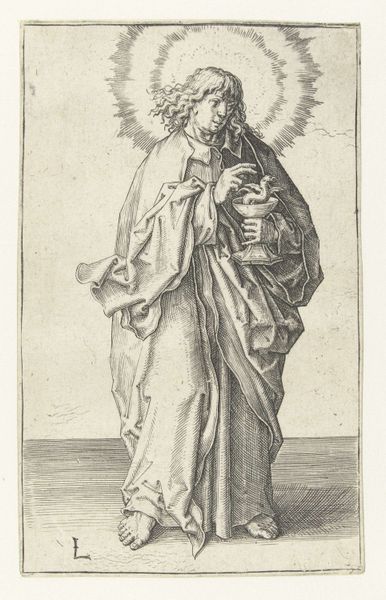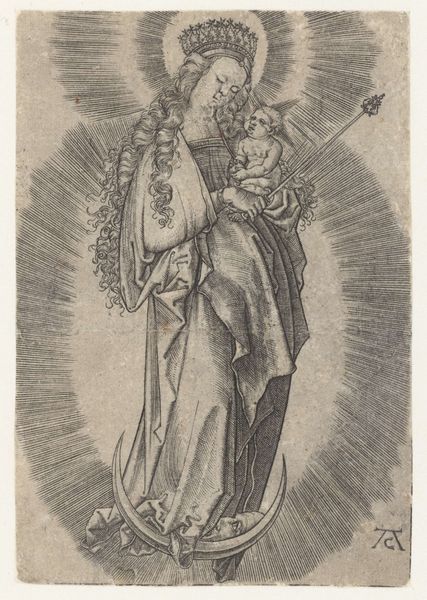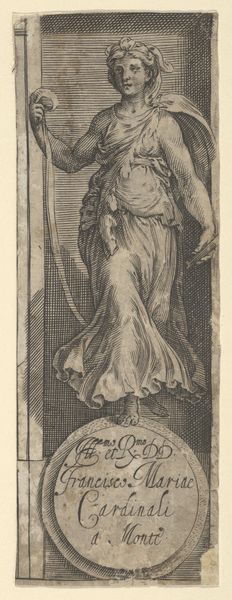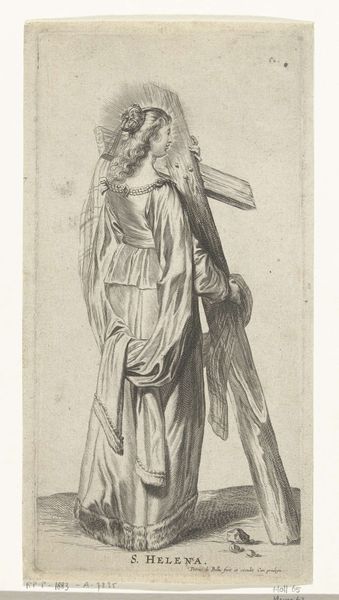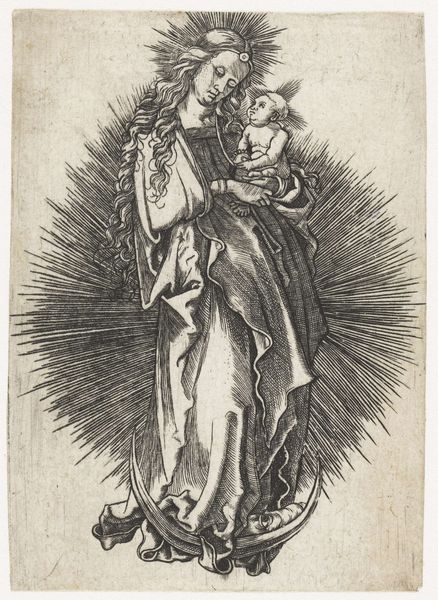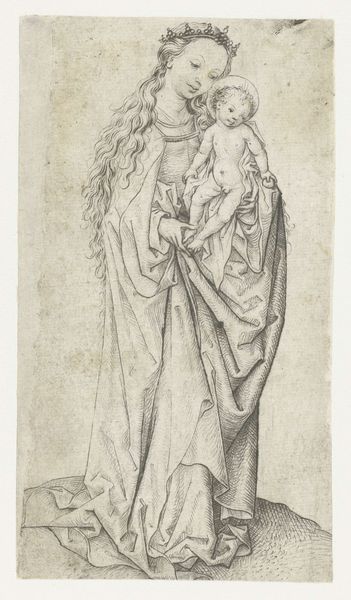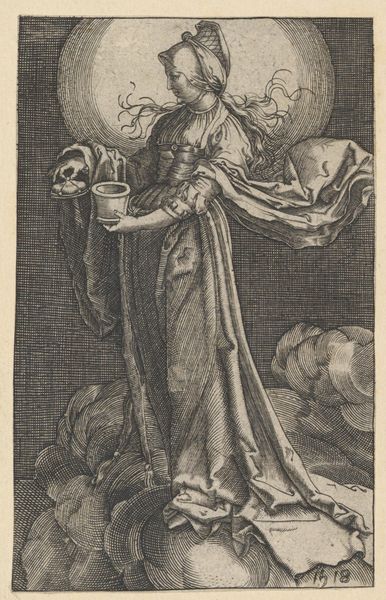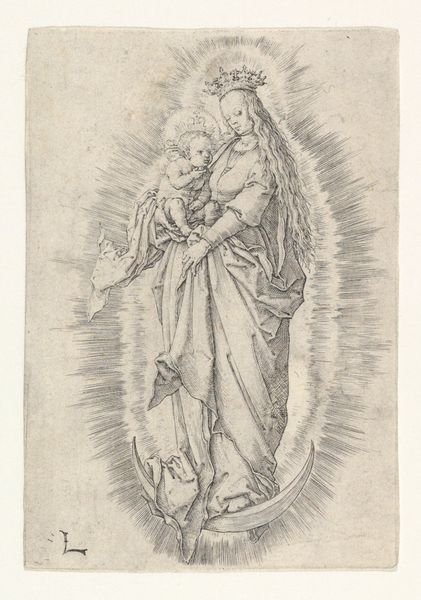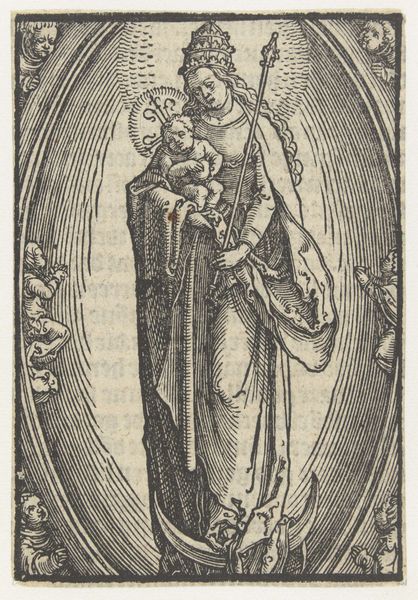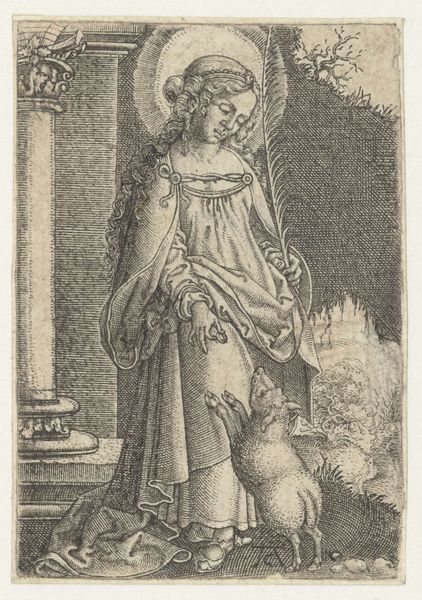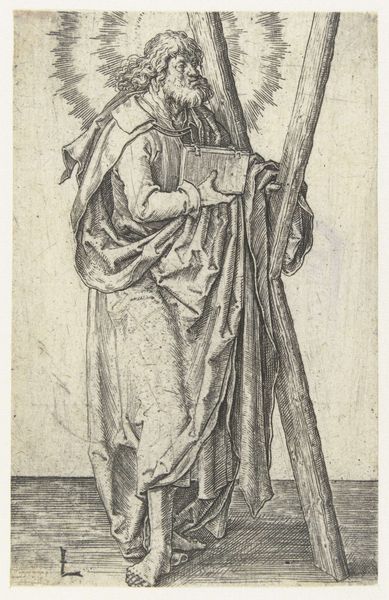
print, engraving
#
portrait
# print
#
figuration
#
form
#
line
#
northern-renaissance
#
engraving
Dimensions: height 120 mm, width 76 mm
Copyright: Rijks Museum: Open Domain
Lucas van Leyden made this engraving of the Virgin and Child on a copper plate, sometime in the early 16th century. Engraving is an exacting process. The artist uses a tool called a burin to cut lines directly into the metal. The plate is then inked, and the surface wiped clean, leaving ink only in the incised lines. Finally, it’s pressed onto paper, leaving a permanent image. What’s fascinating here is the level of detail van Leyden achieved with this laborious method. Look closely, and you’ll see how he uses the varying thickness and density of lines to create subtle gradations of light and shadow. This gives the image a remarkable sense of depth and volume, especially in the Virgin's robes. Engraving was a highly skilled craft, requiring years of training. But it was also a reproductive medium. Prints like this one could be circulated widely, bringing art to a broader audience. So, while van Leyden was a master craftsman, he was also participating in an emerging culture of mass production. This print bridges the gap between unique art object and widely distributed image, inviting us to consider the social and economic forces shaping artistic practice in the Renaissance.
Comments
No comments
Be the first to comment and join the conversation on the ultimate creative platform.
